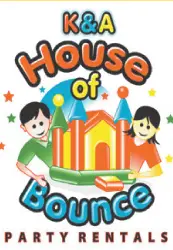MISSING KIDS: The number is down — but keeping your guard up is essential, experts stress
Get the Best Winter Activities
It is important parents enhance their awareness of their neighborhood, friends and family. The parents of 7-year-old Megan Kanka, of New Jersey, were not aware that their neighbor was a twice-convicted sex offender until he was charged with the rape and murder of their daughter. Megan’s Law, passed in 1996, provides parents with a list of high-risk predators and offenders in their community. Produced by the New York State Division of Criminal Justice Service, you can log onto a computer and type in http://criminaljustice.state.ny.us/nsor/. First you need to register your name and address. Next it will ask how you want to search by subdirectory. I typed in my zip code and pulled up a list of serious registered sex offenders in my neighborhood. On Oct. 2, President George W. Bush hosted the first-ever Conference on Missing, Exploited, and Runaway Children to discuss some of the steps that parents, community leaders, and law enforcement can take to prevent such tragedies as the abducted and still-missing Elizabeth Smart, and the kidnapped and killed Samantha Runnion. “We’re vigorously prosecuting those who prey on our children. We need to send a clear message: If you prey on our children, there will be serious, severe consequences,” President Bush told an audience filled with the parents of missing or murdered children. At the conference, the President announced a $10-million expansion of the nation’s Amber Alert systems set up to notify the public about abducted youths; New York State is among more than 20 states to adopt the system in the last year. As you are teaching your children to stay safe, make sure you don’t frighten them. It’s a fine line. Assure your children that you are not trying to scare them, but helping to teach them to be safe so that they may live long and healthy lives. The following are books to read and share with your children: —Child Lures by Kenneth Wooden —Raising Safe Kids in an Unsafe World by Jan Wagner —My Body is Private by Linda Walvoord —————————————————————
The right way to say it
When talking to kids about “stranger danger” and potentially uncomfortable situations, it’s important to keep in mind just what they can absorb. Here are some guidelines from childalert.co.uk. More information can be found on their website at: www.childalert.co.uk.
1. The right attitude and approach: Parents must set the right tone for their children. When parents are calm when discussing tough or scary topics, children will be better able to listen and learn. Parents must monitor their own fear and be careful not to alarm their children.
2. Consider the child's age: • 3- to –5-year-old children are curious and may be naturally trusting. They also easily respond to attempts by adults to be kind or supportive. Toddlers and pre-schoolers do not grasp the long-term consequences of potentially dangerous situations.
• 6- to 9-year-old school children are more capable of understanding right from wrong. They are able to remember information and put it into practice, but may get overwhelmed in a difficult situation.
• 10-to 13-year-old children may overestimate their ability to handle a bad situation. They also may feel they should not be scared and be nonchalant in their attitude about risk.
3. Deliver information in a way appropriate to age. Younger children will benefit from playing and repeated conversations. Parents of older children can discuss current events or real situations to educate them about danger.
Do you know what the top 7 safety tips for preventing child abduction are? Visit www.ChildrensSolutions.com or call toll-free (877) 569-3714.





